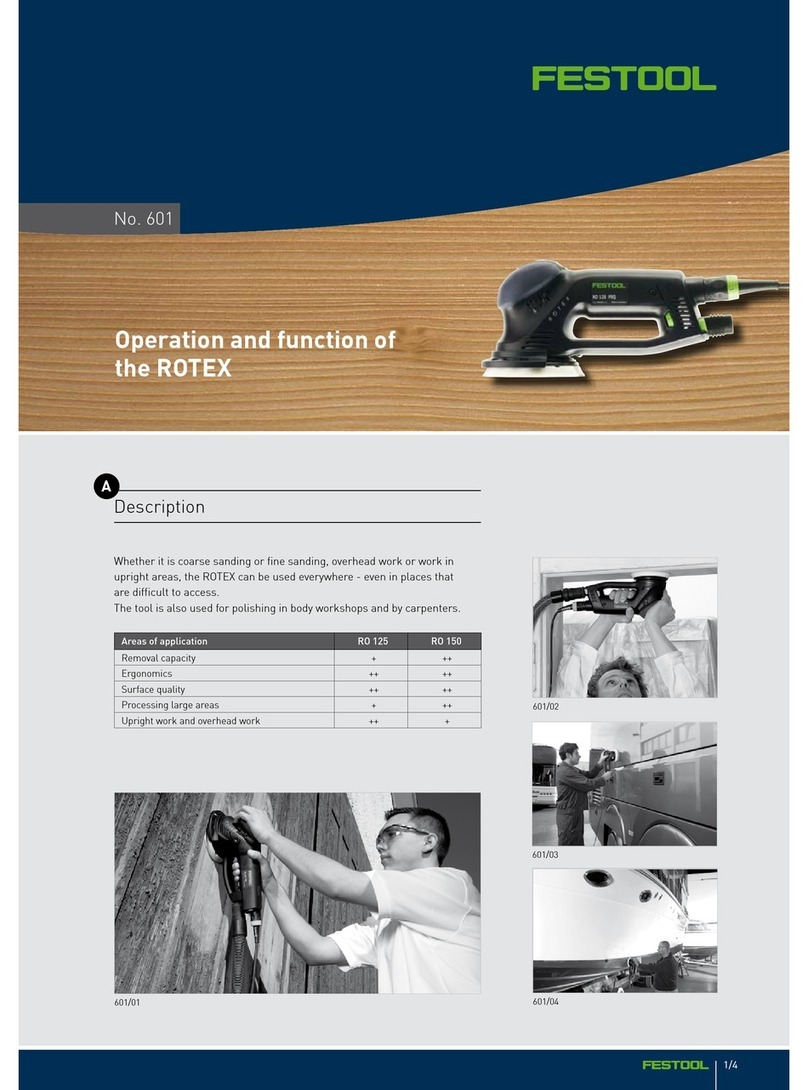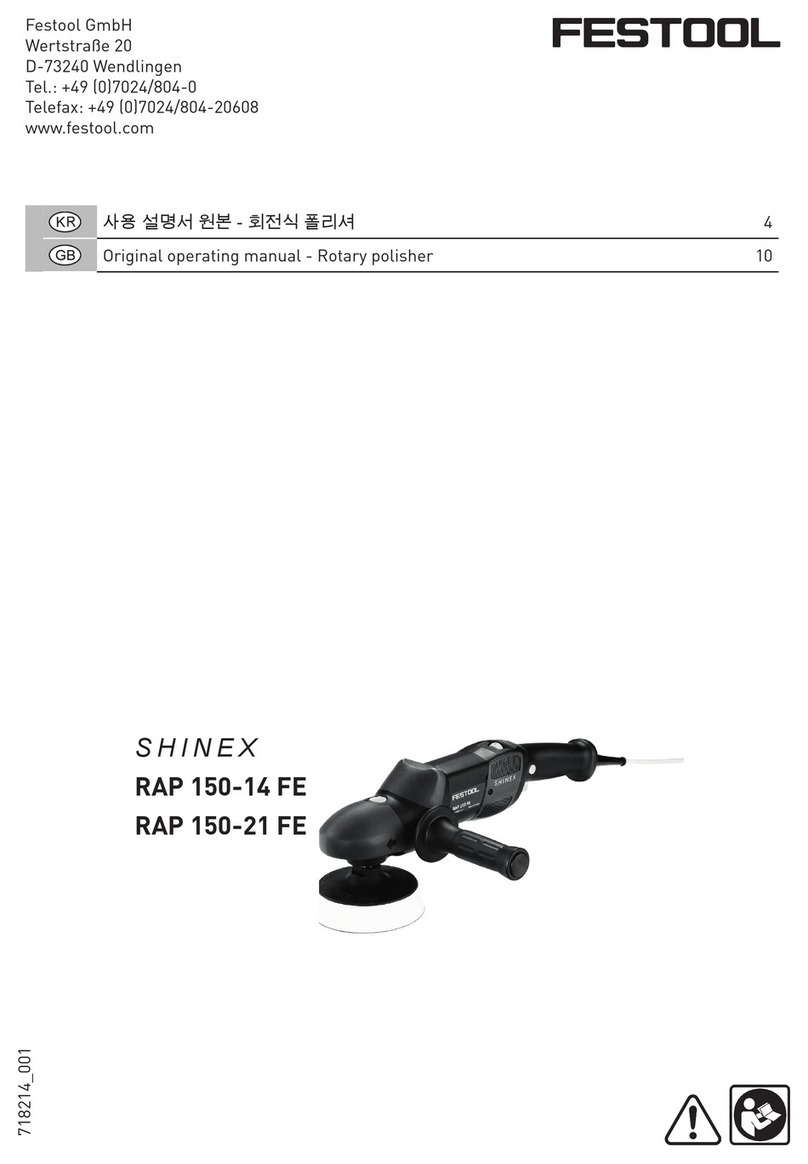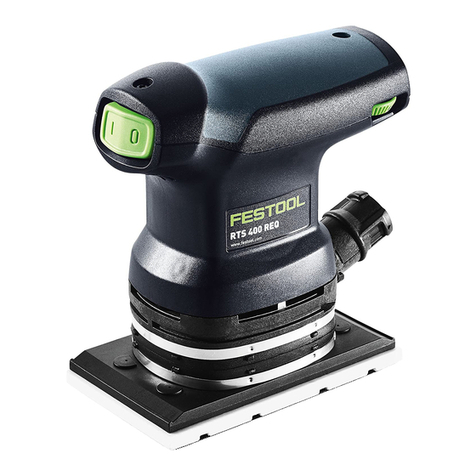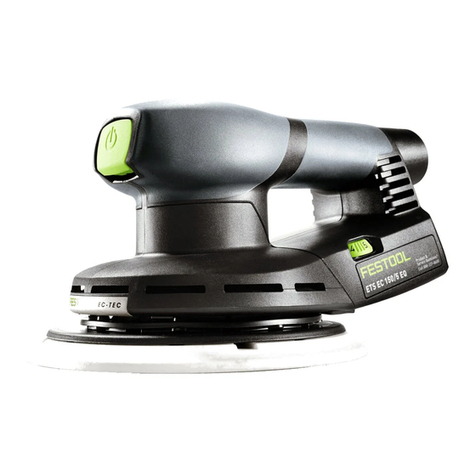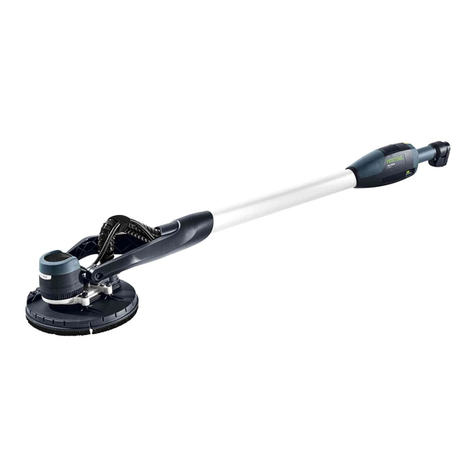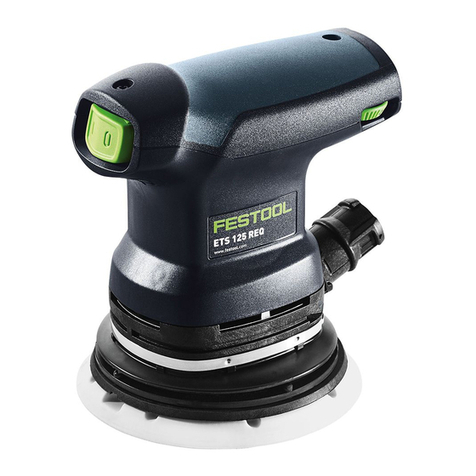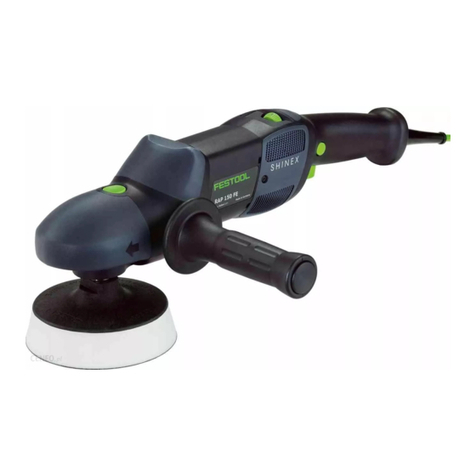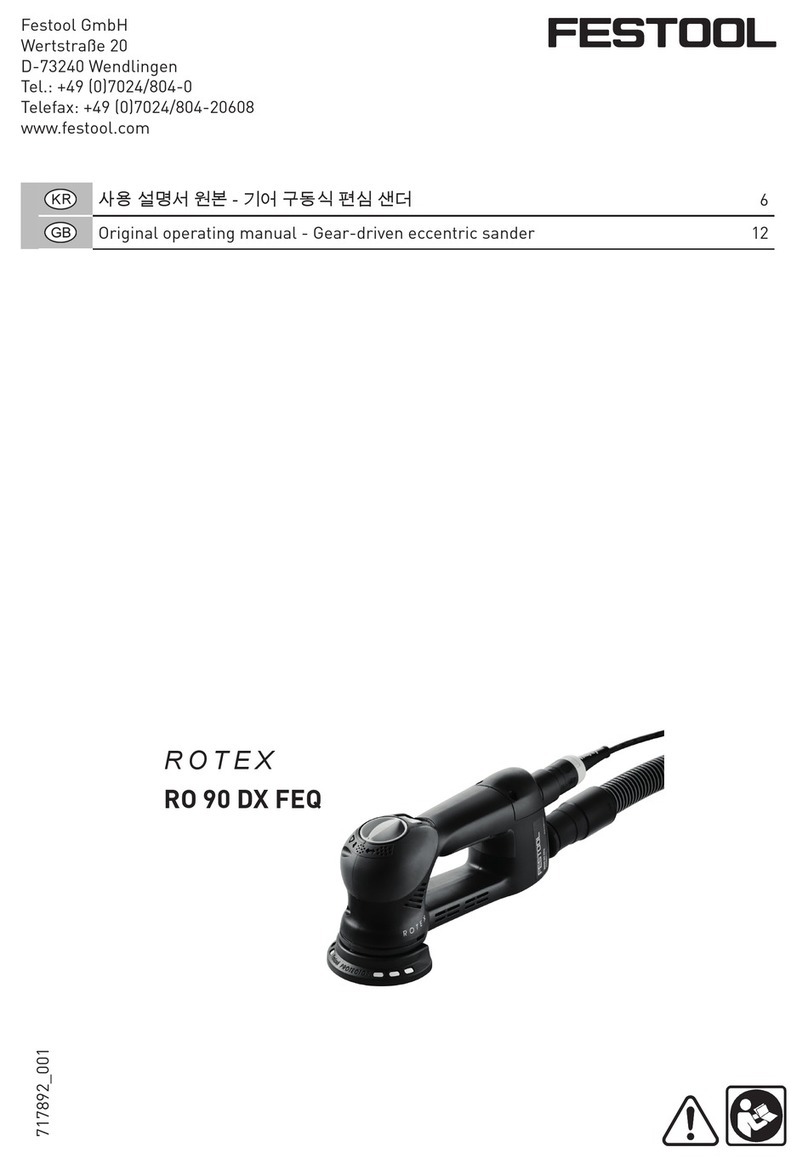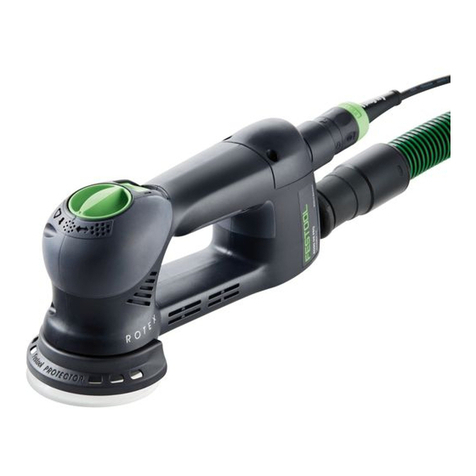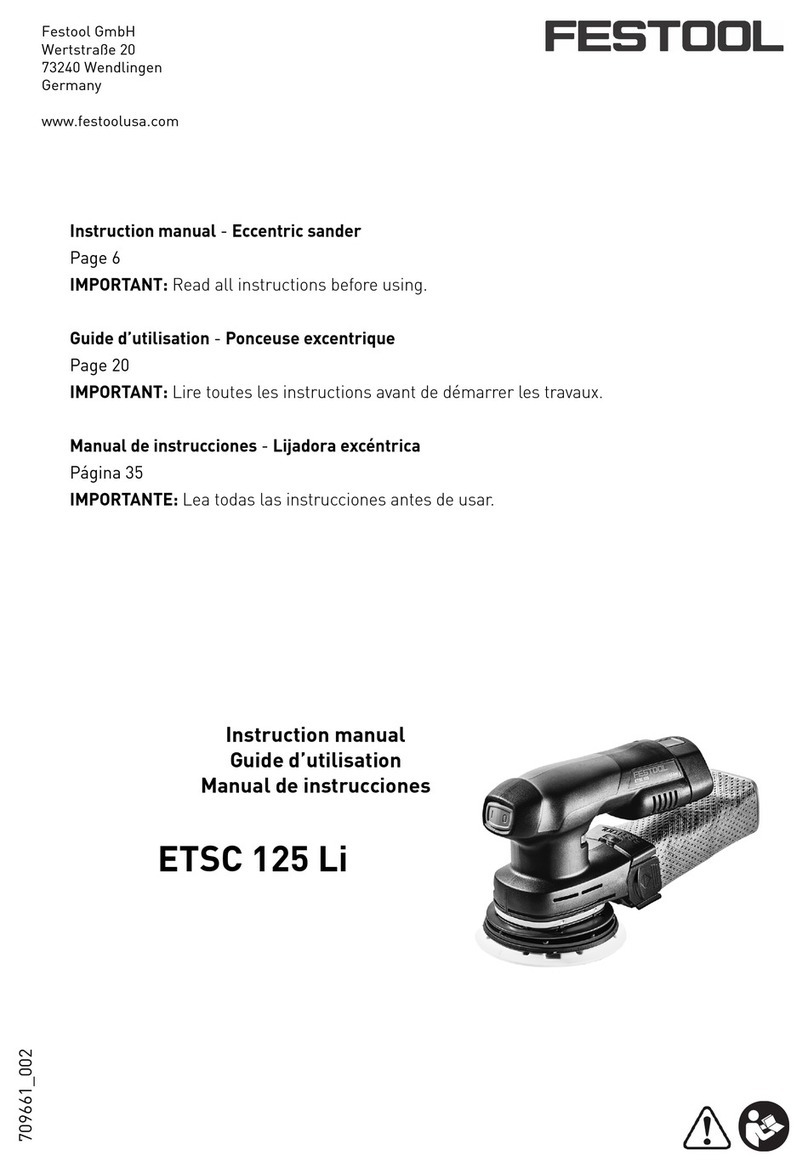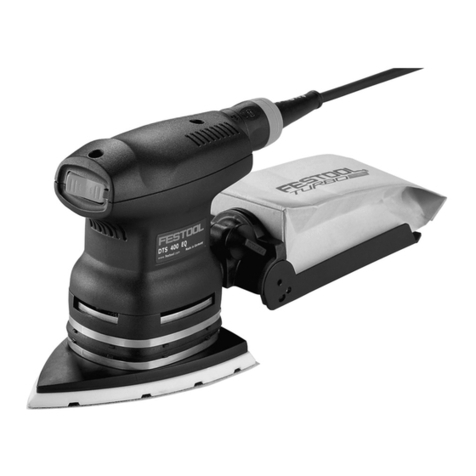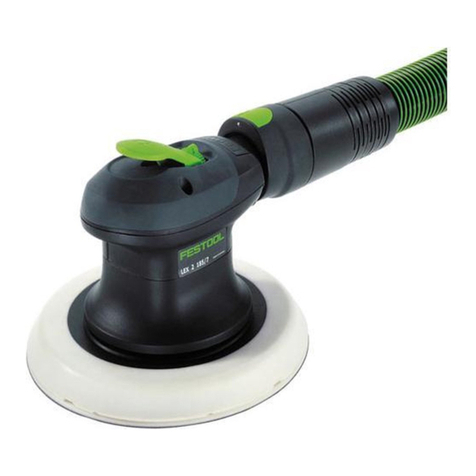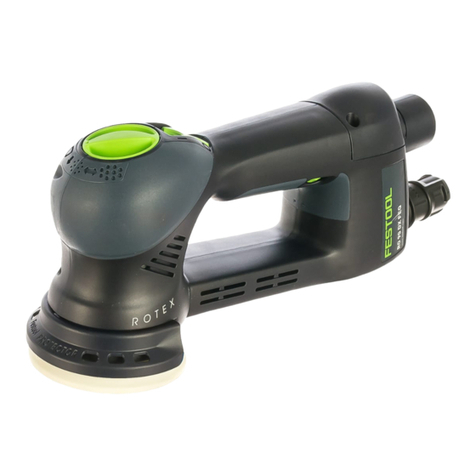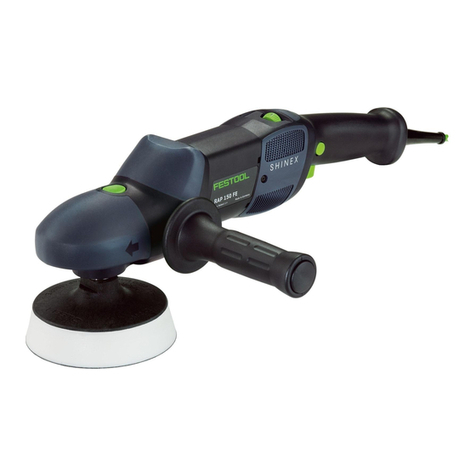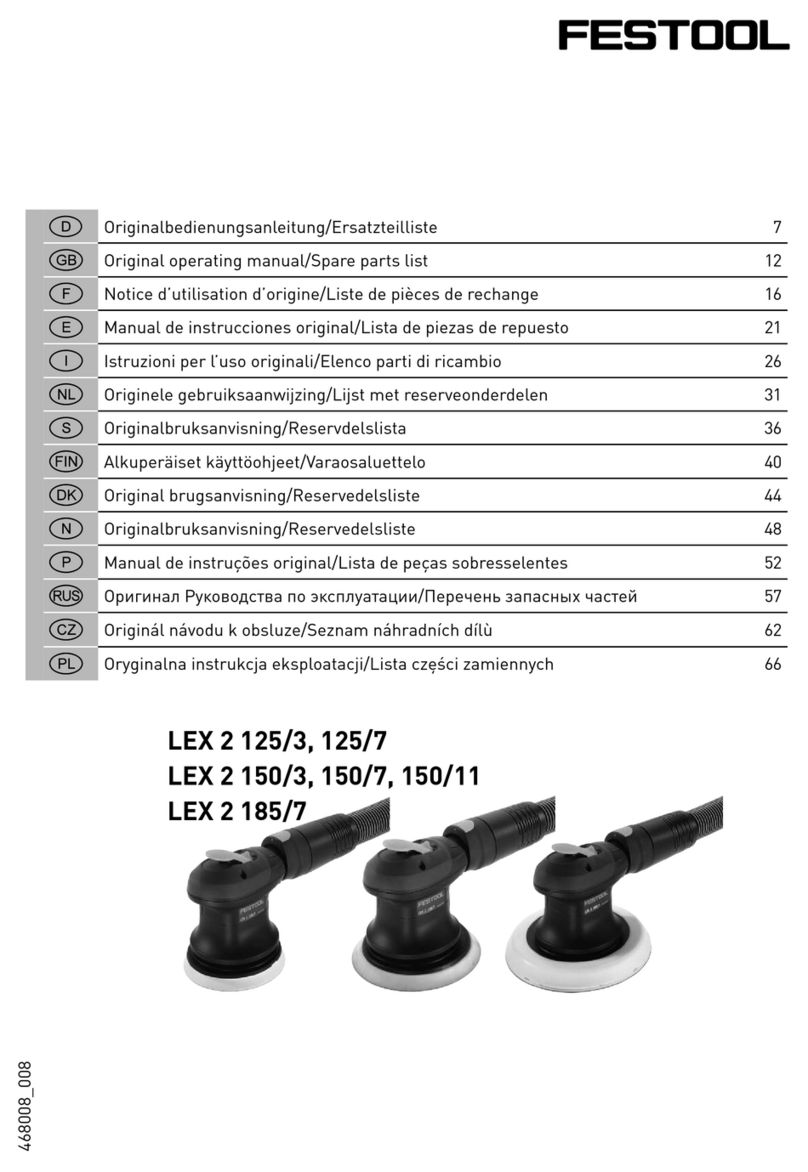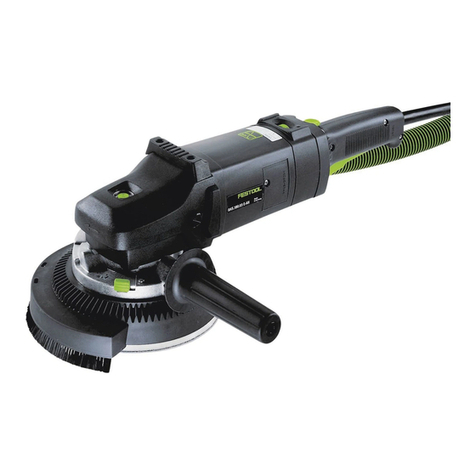
9
RS 100 Q
3 PERSONAL SAFETY
a. Be observant, pay attention to what you are
doing and proceed with care when working
with a power tool. Do not use a power tool
if you are tired or are under the influence of
drugs, alcohol or medication. One moment of
carelessness when using the power tool can
cause serious injuries.
b. Wear personal protective equipment and
always wear protective goggles. Wearing
personal protective equipment, such as a dust
mask, non-slip safety shoes, a hard hat or
hearing protection, reduces the risk of injuries
depending on the type of power tool and how
it is used.
c. Prevent unintentional start-up. Ensure that
the power tool is switched off before connect-
ing it to the power supply and/or the battery,
and before picking it up or carrying it. If you
have your finger on the switch when carrying
the power tool or if the tool is connected to the
power supply when switched on, this may cause
accidents.
d. Remove adjustment tools or wrenches before
switching on the power tool. A tool or wrench
located in a rotating part of the tool can lead to
injuries.
e. Avoid adopting an abnormal posture. Ensure
that your footing is stable and stay balanced at
all times. This allows you to have better control
over the power tool in unexpected situations.
f. Wear suitable clothing. Do not wear loose-
fitting clothing or jewellery. Keep hair and
clothing away from moving parts. Loose-fitting
clothing, jewellery or long hair can be caught
by moving parts.
g. If dust extraction and collection devices can be
installed, these must be connected and used
correctly. Using a dust extraction system can
reduce hazards posed by dust.
h.You should not have a false sense of security;
do not ignore the safety rules for power tools,
even if you are familiar with the power tool
after having used it many times. Careless ac-
tions can lead to severe injuries in fractions of
a second.
4 USING AND HANDLING THE POWER TOOL
a. Never overload the tool. Use the power tool in-
tended for your task. Using a compatible power
tool improves your work and allows you to work
with greater safety in the stated power range.
b. Do not use a power tool with a faulty switch. A
power tool that can no longer be switched on or
off is dangerous and must be repaired.
c. Remove the plug from the socket and/or re-
move a removable battery before adjusting
the tool settings, changing accessory parts
or putting the tool aside. This precautionary
measure prevents the power tool from being
started up unintentionally.
d. When not in use, keep power tools out of the
reach of children. Personnel should not be al-
lowed to use the device if they are not familiar
with it or have not read these instructions.
Power tools pose a hazard when used by inex-
perienced personnel.
e. Maintain power tools and accessories with
care. Check that moving parts are function-
ing correctly and do not jam, and whether any
parts are broken or damaged so badly that
the power tool will not function correctly as a
result. Have damaged parts repaired before
using the tool. Many accidents are caused by
poorly maintained power tools.
f. Keep cutting tools sharp and clean. Carefully
maintained cutting tools with sharp cutting
edges jam less frequently and are easier to
guide.
g. Use the power tool, accessories, insertion
tools, etc. in accordance with these instruc-
tions. Also take into account the working con-
ditions and the job in hand. Using power tools
for applications other than those intended may
create hazardous situations.
h.Keep handles and gripping surfaces dry, clean
and free of oil and grease. Slippery handles and
gripping surfaces do not allow for safe operation
and control of the power tool in unforeseeable
situations.
5 USING AND HANDLING CORDLESS TOOLS
a. Only charge the batteries in chargers recom-
mended by the manufacturer. There is a risk of
fire when using a charger which is meant for a
specific type of battery with a different battery.
b. Only use the correct batteries in the power
tools. The use of different batteries may lead
to injury and a risk of fire.
c. When the battery is not in use, keep it away
from paper clips, coins, keys, nails, screws and
other small metal objects which could bridge
the contacts. A short circuit between the bat-
tery contacts may pose a risk of burns or fire.
